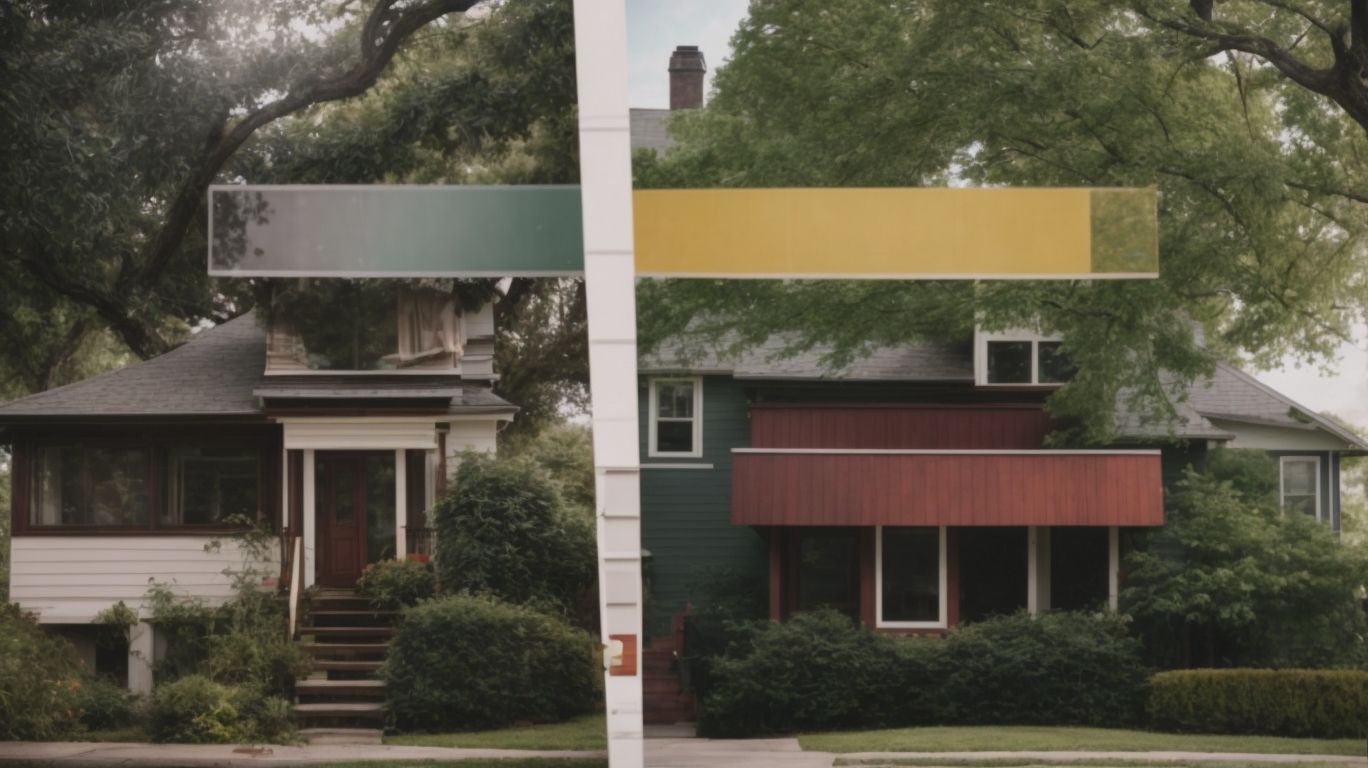
Weighing the Options: DIY vs. Professional Second Story Additions
Considering adding a second story to your home but unsure whether to tackle the project yourself or hire a professional?
We explore the benefits of a second story addition, including increased living space, enhanced property value, and customization options.
We discuss the pros and cons of DIY second story additions, such as cost savings, creative control, and time commitment.
We outline what to expect from a professional second story addition, including the design process, obtaining permits, and the construction process.
We break down the costs involved in both DIY and professional second story additions, as well as hidden costs to consider.
By the end of this article, you will be equipped with the knowledge to determine which option is right for you based on factors to consider, personal preferences, and budget limitations.
What Is a Second Story Addition?
A second-story addition involves the construction of a new floor above the existing structure of a home, expanding the living space vertically.
This type of home renovation project typically requires careful planning and coordination between architects, engineers, and contractors to ensure that the new level is seamlessly integrated with the existing structure.
The process often entails reinforcing the foundation and existing walls to support the additional weight and ensure structural integrity. Considerations such as zoning regulations, building permits, and design aesthetics play crucial roles in the successful execution of a second-story addition.
Homeowners may also need to temporarily relocate during the construction phase to allow for uninterrupted work and ensure safety on-site.
What Are the Benefits of a Second Story Addition?
Opting for a second-story addition can bring numerous benefits, including increased living space, enhanced property value, and the opportunity for customization.
Increased Living Space
One of the key benefits of a second-story addition is the significant increase in living space it offers, providing more room for various functions within the house.
This additional space can be optimized to create new bedrooms for family members, a dedicated home office for remote work, or even a cozy recreational area where the whole family can unwind.
By expanding vertically, homeowners can maintain a spacious layout on their property while accommodating their evolving needs. A second-story addition allows for better privacy as bedrooms and other personal spaces can be situated away from the hustle and bustle of the ground floor, enhancing the overall livability of the home.
Enhanced Property Value
Adding a second story can boost the property’s overall value, making it more attractive to potential buyers and increasing its resale potential in the real estate market.
Not only does a second-story addition enhance the square footage of the property, but it also provides homeowners with the opportunity to create a more functional and spacious living environment. This added space can accommodate growing families, additional bedrooms, or even a dedicated home office. The visual appeal of a two-story home often stands out in a neighborhood, setting it apart from single-story properties and giving it a competitive edge in the housing market.
Customization Options
With a second-story addition, homeowners have the freedom to customize the new space according to their design preferences and aesthetic tastes, ensuring a personalized living environment.
From choosing the layout and room configurations to selecting materials, colors, and finishes, the customization possibilities are vast. Homeowners can opt for modern sleek designs, traditional styles, or create a unique blend that reflects their individuality.
A key benefit of a second-story addition is the ability to tailor the space to meet specific needs, whether it’s adding extra bedrooms, a home office, a luxurious master suite, or a cozy reading nook. This flexibility allows for creating a space that aligns perfectly with the lifestyle and preferences of the residents.
DIY Second Story Addition: Is It a Good Idea?
Embarking on a do-it-yourself (DIY) second-story addition can be a tempting prospect, but it requires careful consideration of costs, feasibility, and one’s skill level in construction.
While the potential cost savings can be a major advantage of tackling a second-story addition project on your own, there are also significant challenges to navigate. Conducting a thorough cost analysis is essential to ensure that the DIY approach aligns with your budget.
Assessing the feasibility of the project involves factors such as structural integrity, zoning regulations, and the availability of necessary materials. Understanding your own proficiency in construction tasks is crucial, as errors in design or execution could lead to costly rework or safety hazards.
Cost Savings
One of the primary motivations for choosing a DIY second-story addition is the potential cost savings associated with undertaking the construction work personally.
By taking on the project yourself, you have more control over the budget and can make strategic decisions to keep costs low. Rather than paying for a contractor’s services, you can allocate those funds directly into materials and equipment, maximizing the value of your investment.
It’s important to recognize that self-managing a construction project comes with its own set of challenges. From acquiring the necessary permits and coordinating subcontractors to ensuring compliance with building codes, there are risks involved that require careful planning and execution to mitigate.
Creative Control
DIY projects offer homeowners unparalleled creative control over design choices, material selection, and the decision-making process throughout the construction of a second story.
This hands-on approach empowers individuals to truly personalize their living spaces and bring their vision to life. By taking on the responsibility of overseeing the project’s execution, homeowners can ensure that every detail reflects their unique style and preferences. From selecting the perfect flooring to choosing the ideal paint colors, DIY enthusiasts have the freedom to make adjustments and modifications as they see fit, resulting in a space that is not only functional but also deeply reflective of their personality and taste.
Time Commitment
Undertaking a DIY second-story addition requires a significant time commitment from homeowners, as they must manage the project timeline, supervise construction activities, and ensure on-site coordination.
Balancing the demands of work, family, and other responsibilities while overseeing a major home renovation project can be overwhelming. From obtaining necessary permits and sourcing materials to coordinating subcontractors and staying on top of inspections, the project management challenges are numerous.
Adhering to timelines is crucial to avoid costly delays and disruptions. On-site supervision is essential during various construction phases to address any issues promptly, ensure quality craftsmanship, and maintain a safe working environment. The hands-on approach of DIY second-story additions necessitates constant vigilance and attention to detail.
Professional Second Story Addition: What to Expect?
Opting for a professional second-story addition guarantees expert guidance, efficient project management, and comprehensive warranty coverage for the construction work undertaken.
Professionals bring a wealth of experience and knowledge to the table, ensuring that the project is completed smoothly and to your satisfaction.
When selecting a contractor for your second-story addition, consider their reputation, past projects, and communication style to ensure a cohesive working relationship.
Professionals can assist in the planning stages of your project, helping you navigate through design options, material selections, and budget considerations.
With their expertise, you can rest assured that the workmanship will be of high quality and backed up by warranty coverage for added peace of mind.
Design Process
The design phase of a professional second-story addition involves collaboration with architects, offering design flexibility, expert advice, and innovative solutions to enhance the property’s aesthetics.
Architects play a crucial role in translating the homeowner’s vision into a feasible and visually stunning design, ensuring that the addition blends seamlessly with the existing structure. Their expertise in space utilization, building codes, and structural integrity is instrumental in creating a structurally sound addition that not only looks impressive but also meets all necessary regulations.
Design flexibility options allow for customization based on individual preferences, whether it’s adding extra bedrooms, a home office, or a luxurious master suite. Expert advice guides homeowners through the decision-making process, helping them make informed choices that add long-term value to their property.
Obtaining Permits
Securing the necessary building permits for a professional second-story addition is essential to ensure compliance with zoning regulations, avoid legal liabilities, and guarantee the structural integrity of the construction project.
Achieving the desired design for a second-story addition involves submitting detailed plans to local authorities for review. These plans should clearly outline the proposed changes and demonstrate how they align with the existing zoning laws to secure the required permits.
By engaging with the municipal zoning department early in the process, homeowners can address any potential issues or modifications needed to adhere to regulations. This proactive approach not only mitigates legal risks but also promotes a smoother construction phase, ensuring that the structure meets all safety and quality standards.
Construction Process
The construction phase of a professional second-story addition involves skilled labor, high-quality materials, and adherence to strict safety regulations to ensure the structural integrity and safety of the new addition.
Skilled labor plays a crucial role in executing the intricate tasks involved in adding a second story to an existing structure. Experienced carpenters, electricians, plumbers, and other tradespeople work together to ensure that the addition is seamlessly integrated with the existing building.
Material selection is also a key consideration during the construction process. From the framing lumber to the roofing materials, every component must meet quality standards to guarantee durability and longevity. Adherence to safety regulations is non-negotiable to prevent accidents and ensure a secure construction outcome.
What Are the Costs Involved in a Second Story Addition?
The costs associated with a second-story addition vary depending on whether it is approached as a DIY project or undertaken with professional assistance, with factors like project scope and design complexity influencing the overall expenses.
Undertaking a DIY second-story addition can appear more cost-effective at first glance, as it eliminates labor costs. The project scope and design complexity may present challenges for those without professional experience, potentially leading to costly mistakes down the road.
On the other hand, opting for professional assistance ensures a smoother process, with experts handling the intricate aspects of structural integrity, permits, and project management, albeit at a higher initial cost. When considering the financial implications, it’s crucial to weigh the trade-offs between cost savings from a DIY approach and the expertise offered by professionals.
DIY Costs
DIY second-story additions entail costs related to tools and equipment, potential project risks, and considerations for sustainable construction practices to minimize environmental impact.
These financial aspects play a crucial role in determining the overall feasibility of a DIY second-story project. Investing in the necessary tools and equipment might seem like a significant upfront cost, but it is essential for ensuring the safety and efficiency of the construction process.
Conducting a thorough risk assessment before beginning the project can help identify potential challenges and mitigate them effectively. Incorporating sustainability considerations, such as using eco-friendly materials and energy-efficient techniques, not only benefits the environment but can also lead to long-term cost savings on utilities.”
Professional Costs
Professional second-story additions involve costs associated with skilled labor, project timelines, and considerations for enhancing energy efficiency within the new construction.
- Skilled labor costs typically make up a significant portion of the expenses for second-story additions, as experienced professionals are needed for structural work, electrical installations, plumbing, and finishing touches.
- Managing project timelines effectively is crucial to keep the construction process on track and within budget, with delays potentially leading to increased expenses.
- To promote energy-efficient design and construction practices, incorporating features like advanced insulation, energy-efficient windows, and high-efficiency HVAC systems can help reduce long-term energy costs and enhance the sustainability of the new space.
Hidden Costs to Consider
Both DIY and professional second-story additions may entail hidden costs such as unforeseen project risks, insurance coverage for potential mishaps, and the need for thorough project assessments to identify hidden expenses.
Considering these factors can help individuals embark on their second-story addition project with a clearer understanding of the financial implications involved. Relying on professional guidance can significantly mitigate risks associated with complex construction processes and ensure that insurance coverage adequately protects against unexpected events.
Conducting detailed project assessments before commencing construction is crucial, as it enables early identification of potential cost escalations, allowing for proper budgeting and preventing financial surprises down the line.
Which Option is Right for You?
Determining whether a DIY or professional second-story addition is suitable for your needs involves evaluating various factors, including personal preferences, budget constraints, and project requirements.
When making this decision, it’s crucial to assess your own skills, available time, and willingness to take on the challenges of a construction project. DIY projects can offer a sense of accomplishment and potential cost savings, but they also require significant time and effort. On the other hand, hiring professionals ensures expert workmanship and saves you from potential mistakes or safety hazards. Consider weighing the pros and cons of each option against your specific situation to make an informed choice that aligns with your goals.
Factors to Consider
When deciding on a second-story addition approach, consider factors such as project requirements, feasibility assessments, and safety precautions to ensure a successful and secure construction process.
Assessing the scope of your project is essential in determining whether a DIY or professional route is more suitable. DIY projects may be cost-effective, but professional contractors bring expertise and quality assurance to the table. Conducting a thorough feasibility evaluation will help you understand the complexity of the task and whether specialized skills are required.
Prioritizing safety measures, like proper structural reinforcement and adherence to building codes, is crucial for a smooth and risk-free construction experience.
Personal Preferences
Personal preferences play a significant role in determining the suitability of a DIY or professional second-story addition, influencing design choices, interior aesthetics, and exterior appeal of the final construction.
When considering design options, individuals may lean towards minimalist, modern, traditional, or eclectic styles based on their personal taste. Factors such as lighting, color schemes, flooring materials, and furniture selection also heavily impact the interior design of the added space. Exterior aesthetics are often influenced by preferences for architectural styles, roofing materials, window designs, and landscaping features, all of which contribute to the overall look and feel of the second-story addition.
Budget Limitations
Budget limitations are a crucial factor in choosing between DIY and professional second-story additions, as they influence cost analysis, construction expenses, and the overall value proposition of the project.
When considering the financial aspect of a second-story addition, one must carefully weigh the costs involved in materials, labor, permits, and unforeseen expenses. DIY projects often appeal to those looking to minimize upfront expenses, but may end up costing more in the long run if mistakes are made. Professional construction, while initially more costly, can provide peace of mind through efficient project management and quality workmanship. Evaluating the trade-offs between cost savings and quality assurance is essential in making an informed decision that aligns with both budget constraints and desired outcomes.




No Comments